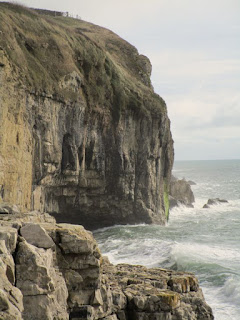 In her rather brutal memoir of life in a pre-reform Roman Catholic convent, Through the Narrow Gate, Karen Armstrong relates how her Sisters went a bit crackers after a stray cat found its way into the precincts. They competed to feed it and look after it, and got hysterically jealous and angry with each other. It was, Armstrong suggested, very clearly a function of the locked-down emotional lives the nuns were forced to live by a regime which deliberately stifled and thwarted affection developing between the human inmates of the convent, in the belief that human love and divine love are necessarily rivals.
In her rather brutal memoir of life in a pre-reform Roman Catholic convent, Through the Narrow Gate, Karen Armstrong relates how her Sisters went a bit crackers after a stray cat found its way into the precincts. They competed to feed it and look after it, and got hysterically jealous and angry with each other. It was, Armstrong suggested, very clearly a function of the locked-down emotional lives the nuns were forced to live by a regime which deliberately stifled and thwarted affection developing between the human inmates of the convent, in the belief that human love and divine love are necessarily rivals.
Last Wednesday, at Southwark Cathedral, they buried a cat. Bishop Philip North of Burnley, doughty champion of Catholic orthodoxy in the Church of England, was incredulous, Tweeting that he hoped it was a joke for the sake of the bereaved people whose loved ones' funeral services were restricted and curtailed during the pandemic. Not at all, responded the Southwark Cathedral clergy, this ceremony, for this animal, was a means for others to mourn when other forms of mourning were unavailable. Doorkins the cathedral cat had become as much a member of the community as any of its human inhabitants.
Animals aren't human: their mental worlds are closed to us, and while we can observe how they behave, our interpretations of that behaviour, or at least of how they conceive it, are projections. In The Four Loves, CS Lewis rates our love of animals not as an example of the amatory category he calls 'the love of the sub-human', but of 'affection', akin to the kind of feeling we might have for certain sorts of human beings with whom we are generously but not intimately involved. Thinking about it that way side-steps barren discussions about whether animals have 'souls'; but Lewis still only ascribes to them 'personality, or the illusion of personality'. It's more about us, than them.
Even so, this is not nothing. I have no interest in animals at all though I am moderately well disposed to my fish and the birds that find their way into my garden (I could easily live without the cats), but have been educated in these matters by meeting people whose relationship with their pets is emotional and meaningful, however unequal it may be. I've even carried out a funeral service for a dog. Animals aren't people: but their connection with us is real enough. There is no issue about recognising that, even at a cathedral.
The one aspect of the passing of Doorkins, as with her life, that troubles me is the particular projections placed on her. The cathedral was happy to make use of her commercially, and arguably her very name was a snarky exploitation of a mute creature in order to poke fun at a celebrity atheist. She treated the bishop with disdain, the Dean recalled. No, she didn't: she had no idea who the bishop was. You may have wanted to think she did. Her inner world was utterly unknown to any of the people who may have interacted with her day by day, or theirs to her. Had it been me, I would have been perfectly content to commend her into the Lord's keeping, but I might not have made such a fuss of it: there's something not quite seemly in doing so.
(As I will never have another reason to show it to you, here is Susan Herbert's reimagining of St Catherine as a cat:)
















































